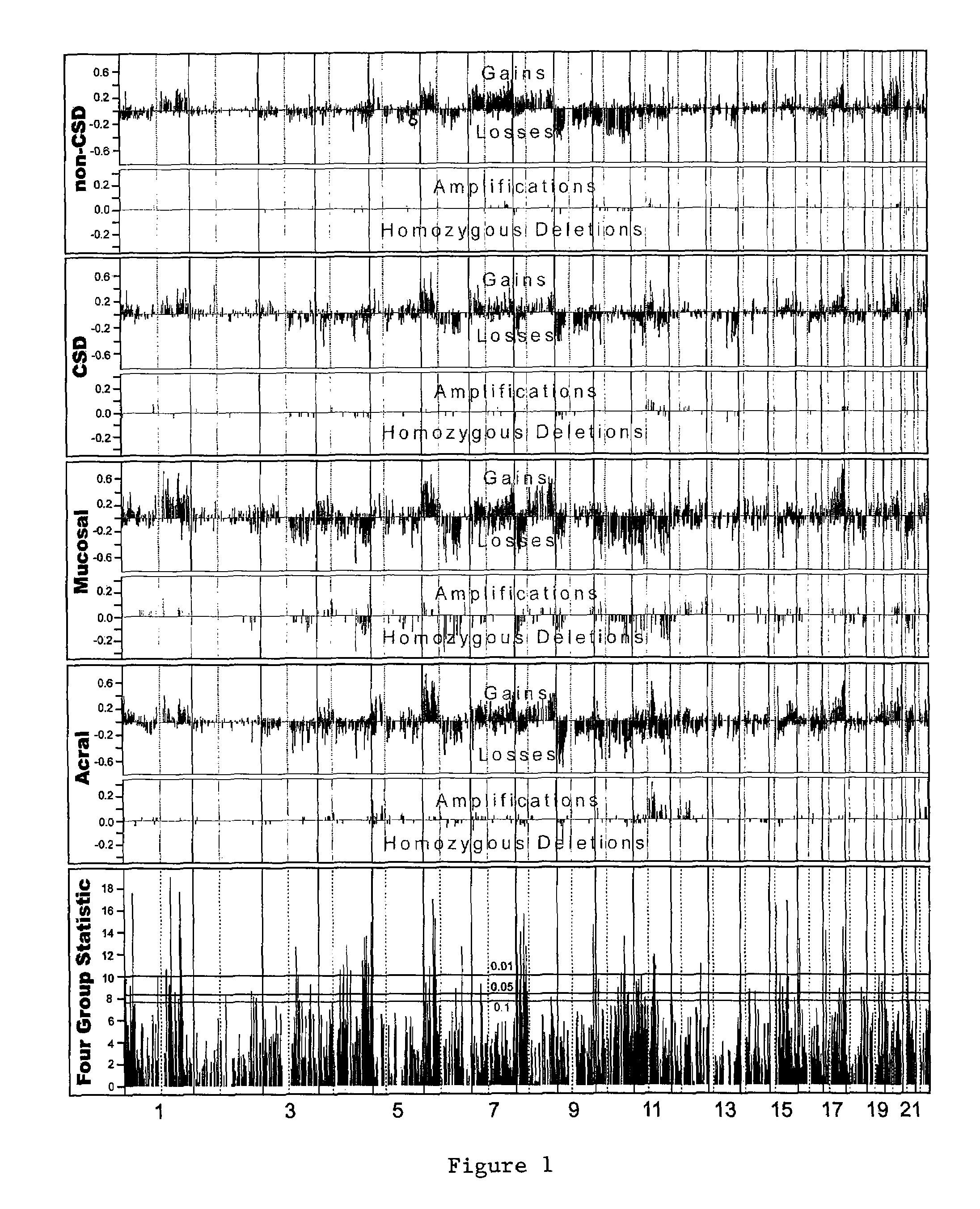Detection of chromosomal region copy number changes to diagnose melanoma
a technology of chromosomal region and copy number, which is applied in the direction of microbiological testing/measurement, biochemistry apparatus and processes, etc., can solve the problems of significant morbidity, no consensus can be reached, and diagnostic ambiguity has significant adverse effects on patients
- Summary
- Abstract
- Description
- Claims
- Application Information
AI Technical Summary
Benefits of technology
Problems solved by technology
Method used
Image
Examples
examples
Material and Methods
[0095]Archival paraffin-embedded primary melanomas that had an invasive component in which tumor cells dominated over stroma cells were obtained from the Dermatopathology Section of the Department of Pathology and Dermatology, University of California, San Francisco; the Department of Dermatology, Kumamoto University School of Medicine, Kumamoto, Japan; the Department of Pathology, Memorial-Sloan-Kettering Cancer Center, New York, N.Y.; the Dermatohistopathologic Laboratory, Friedrichshafen, Germany; Department of Dermatology, Seoul National University College of Medicine, Seoul, Korea; the Department of Dermatology, Tohoku University School of Medicine, Sendai, Japan, and the Department of Dermatology, University of Würzburg, Germany. Tumors were selected to obtain four groups of comparable sizes: acral melanoma was defined as melanoma occurring on the nonhair-bearing skin of the palms or soles or under the nails (n=36); mucosal melanomas were defined as arising...
PUM
| Property | Measurement | Unit |
|---|---|---|
| Tm | aaaaa | aaaaa |
| temperature | aaaaa | aaaaa |
| temperature | aaaaa | aaaaa |
Abstract
Description
Claims
Application Information
 Login to View More
Login to View More - R&D
- Intellectual Property
- Life Sciences
- Materials
- Tech Scout
- Unparalleled Data Quality
- Higher Quality Content
- 60% Fewer Hallucinations
Browse by: Latest US Patents, China's latest patents, Technical Efficacy Thesaurus, Application Domain, Technology Topic, Popular Technical Reports.
© 2025 PatSnap. All rights reserved.Legal|Privacy policy|Modern Slavery Act Transparency Statement|Sitemap|About US| Contact US: help@patsnap.com


